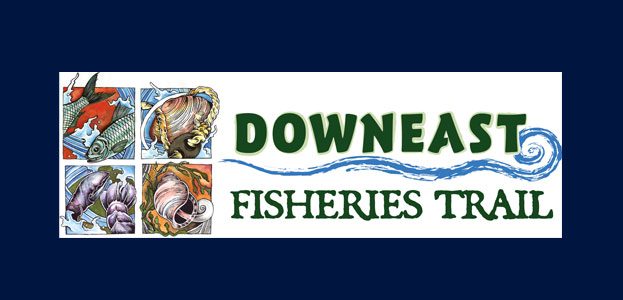
Celebrating Maine’s Maritime Heritage
The maritime heritage of Downeast Maine is being celebrated and illustrated at 45 locations in Hancock and Washington counties that are part of a new interpretive educational initiative.
The Downeast Fisheries Trail, which will be officially launched Thursday, June 21 at Cobscook Bay State Park in Edmunds Township, recognizes the importance of fishing to Maine’s coastal communities. According to the National Marine Fisheries Service, the proportion of Maine workers employed in commercial fishing industries is more than 10 times the national percentage. Nowhere is this more evident than in Hancock and Washington counties, in which more commercial fishermen are employed than the rest of the state, and which account for the majority of clams and lobsters landed in Maine. Many of these same fishermen also harvest elvers, alewives, smelt, crabs, herring, shrimp, scallops, urchins, worms and seaweed. Sea farmers raise Atlantic salmon, mussels and oysters; fish hatcheries in the region produce endangered sea-run salmon for restoration in Maine rivers.
“The scale of changes facing fisheries in communities today is even greater than the decline of the sardine industry,” says project coordinator Natalie Springuel, a member of Maine’s Marine Extension Team, a collaboration between the University of Maine-based Maine Sea Grant and University of Maine Cooperative Extension. “Groundfish like cod were a major fishery up until the 1980s, but that fishery is now virtually nonexistent. As fisheries decline, these once-remote coastal communities face a loss of working waterfront. The rich fisheries heritage that defines this region and the quality of place that locals and visitors cherish is threatened on many fronts.”
Today’s fishermen continue a centuries-long tradition of obtaining sustenance from the sea. Signs of this heritage abound, from fishing weir designs passed down from Wabanaki inhabitants, to the foundations of sardine canneries that once crowded the working waterfront, to fish houses, saltworks and the wooden vessels that sailed into Downeast harbors loaded with cod from the Grand Banks of Newfoundland.
Downeast Fisheries Trail partners unveiled a new interpretive sign at the Cobscook Bay State Park public boat launch during a ribbon-cutting ceremony. Two additional new signs were installed at Morong Cove in Lubec and Shackford Head State Park in Eastport. The Downeast Fisheries Trail includes locations from the Penobscot Marine Museum in Searsport to Campobello International Park in New Brunswick, Canada. In between are museums and historical societies, conservation areas, views of active fishing harbors, and points of historic interest including former flake yards for drying fish, shacks for mending nets, fly-fishing pools and alewife runs.
Partners in Washington County initiated the Down East Fisheries Trail in 2000. With support from the Maine Community Foundation and the Maine Office of Tourism, Maine Sea Grant worked with Sunrise County Economic Council, Down East and Acadia Regional Tourism, the Lobster Institute and others to expand the trail into Hancock County, with input from local communities.
Maps, photographs, and descriptions of all the sites can be found online (DowneastFisheriesTrail.org). Printed maps of the trail can be obtained by calling Maine Sea Grant at (207) 581-1435 or umseagrant@maine.edu.
Contact: Natalie Springuel, (207) 288-2944 ext. 5834; Jessica Bloch, (207) 581-3777 or jessica.bloch@umit.maine.edu
